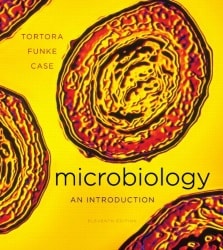is the study of microscopic organisms – a largely unseen world
Microbiology
are organisms that are too small to be seen with the unaided eye
Microorganisms
Microbes in Our Lives ,few are
pathogenic (disease-causing
Microbes in Our Lives, they Decompose
organic waste
Microbes in Our Lives, are producers in the ecosystem by
Are producers in the ecosystem by
Microbes in Our Lives
photosynthesis
Microbes in Our Lives,produce industrial chemicals such as
ethanol and acetone
Microbes in Our Lives, produce fermented foods such as
vinegar, cheese, and bread
Microbes in Our Lives, produce products used in manufacturing
e.g., cellulase) and treatment (e.g., insulin)
There (3) classification of Microorganisms are
–Bacteria
–Archaea
–Eukarya
- Protists
- Fungi
- Plants
- Animals
Ancestors of______were the first life on Earth
bacteria
Oldest known fossils are of
stromatolites
stromatolites are how old
–3.5 billion years old
The first microbes, however, were only directly observed in
1673
Organism Nomenclature was established by
Carolus Linnaeus (1735)
Each organism has unique _________species name.
two part genus
Organism Nomenclature is usually written in
- in italics or underlined
- genus with capital first letter
- species/specific epithet all lowercase
After first use in documents, you can
- abbreviate genus: example:E. coli
Name often describes organism
- shape,
- habitat,
- name of discoverer, etc.
1673-1723: Anton van Leeuwenhoek described live
animalcules
1665: Robert Hooke reported that living things were composed of
little boxes, or cells
1858: Rudolf Virchow said cells arise from
preexisting cells
Cell theory: All living things are composed of
cells and come from preexisting cells
Spontaneous generation: The hypothesis that living organisms arise from nonliving
matter; a “vital force” forms life
Biogenesis: The hypothesis that the living organisms arise from
preexisting life
Pasteurization is the application of a
high heat for a short time
1876: Robert Koch proved that a bacterium causes
anthrax
Paul Erlich speculated about a
magic bullet” that could destroy a pathogen without harming the host
Treatment with chemicals is
chemotherapy
Chemotherapeutic agents used to treat infectious disease can be __________or antibiotics.
synthetic drugs
_____________are chemicals produced by bacteria and fungi that inhibit or kill other microbes.
Antibiotics
1928: Alexander Fleming discovered the_______.
first antibiotic
Fleming observed that_______fungus made an antibiotic, penicillin, that killed S. aureus
Penicillium
_______Penicillin was tested clinically and mass produced
1940s
_______a new technique for biotechnology, enables bacteria and fungi to produce a variety of proteins including vaccines and enzymes
Recombinant DNA technology
___________infections are fatal in many insects but harmless to other animals, including humans, and to plants
Bacillus thuringiensis
The signs of interaction between atoms and molecules is called
Chemistry
Atoms are listed by their__________.
Atomic number
The total number of protons and neutrons in an atom is the approximate_________.
Atomic weight
There are___________ naturally occurring elements.
92
___________Atoms with different numbers of neutrons in their nuclei.
Isotopes
In an Adam electrons are arranged in__________.
Electron Shells
Electron shells are region corresponding to different______________.
Energy levels
Time it takes for one half of the atom in sample to decay
Half-life
Atoms are mostly “empty” space – filled in by a cloud of
electrons
Valence electrons are located in the
outermost shell of an atom
Atoms with__________ shells can share or transfer valence electrons with certain other atoms
incomplete valence
These interactions usually result in atoms staying close together, held by attractions called
chemical bonds
__________are groups of atoms held together in a stable association
Molecules
______are molecules containing more than one type of element
Compound
A ________ has characteristics different than those of its elements
compound
Which bonds are stronger______ and _______.
Ionic and Covalent
Which bond is weaker _____ and ______.
Hydrogen bond and Van der Waals.
Compounds formed by ionic bonds are called_____.
ionic compounds, or salts
________form when two atoms share one or more pairs of electrons
Covalent bonds
- In a ______________the atoms share the electron.
nonpolar covalent bond,
_________is an atom’s attraction for the electrons in a covalent bond
Electronegativity
In a, _______one atom is more electronegative,
polar covalent bond
______are attractions between molecules that are close together as a result of these charges
Van der Waals interactions
involve the making or breaking of bonds between atoms
Chemical reactions
A change in ________occurs during a chemical reaction.
chemical energy
____________reactions absorb energy,
Endergonic
_________reactions release energy
Exergonic
Occur when atoms, ions, or molecules combine
to form new,
larger molecules.
Synthesis Reactions
is the synthesis of molecules in a cell
Anabolism
Occur when a molecule is split into smaller molecules, ions, or atoms
Decomposition Reactions
is the decomposition reactions in a cell
Catabolism
- Are part synthesis and part decomposition
Exchange Reactions
What type of reaction?
Synthesis Reactions
What type of reaction?
Decomposition Reactions
What type of reaction?
Exchange Reactions
- Can readily go in either direction
- Each direction may need special conditions
Reversible Reactions
What type of reaction?
Reversible reaction
In a ,_____ one atom is more electronegative, and the atoms do not share the electron equally
polar covalent bond
_____is an excellent solvent
water
Substance that resists changes in pH
Act by
–Releasing hydrogen ions when a base is added
–Absorbing hydrogen ions when acid is added
Overall effect of keeping [H+] relatively constant
Buffers
Most _______ consist of a pair of molecules, one an acid and one a base
biological buffer
Life molecules are mostly made up of_____
carbon
